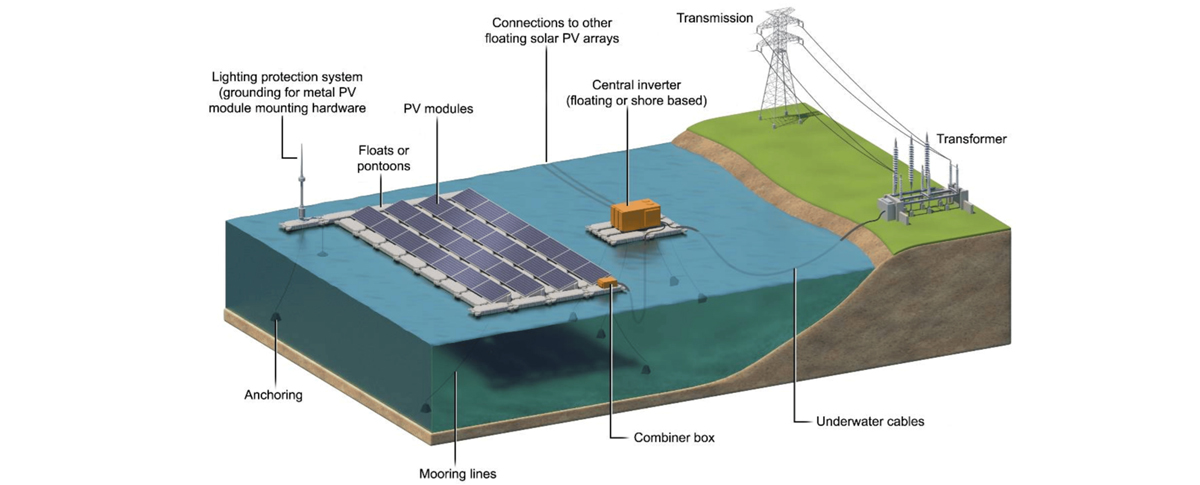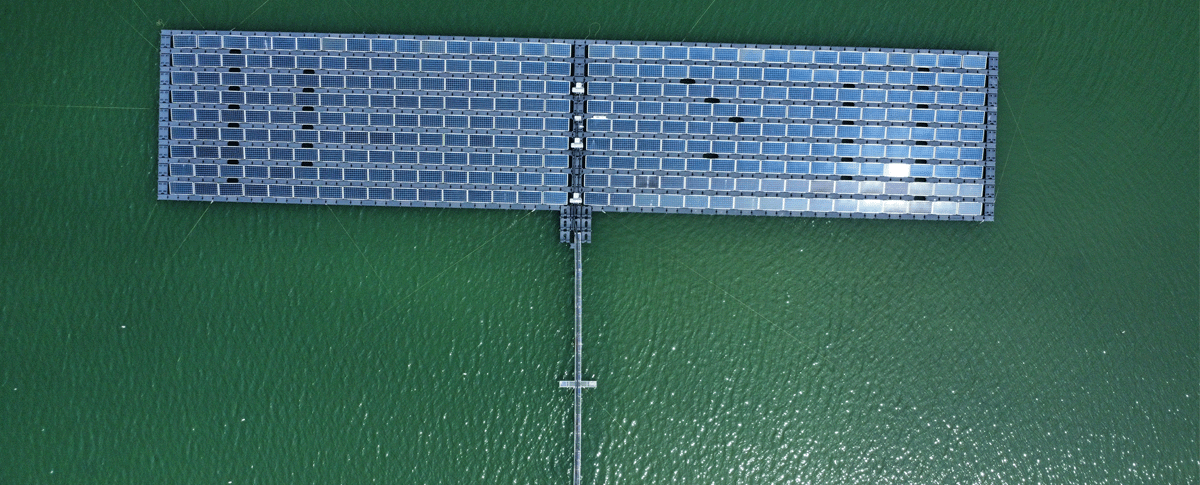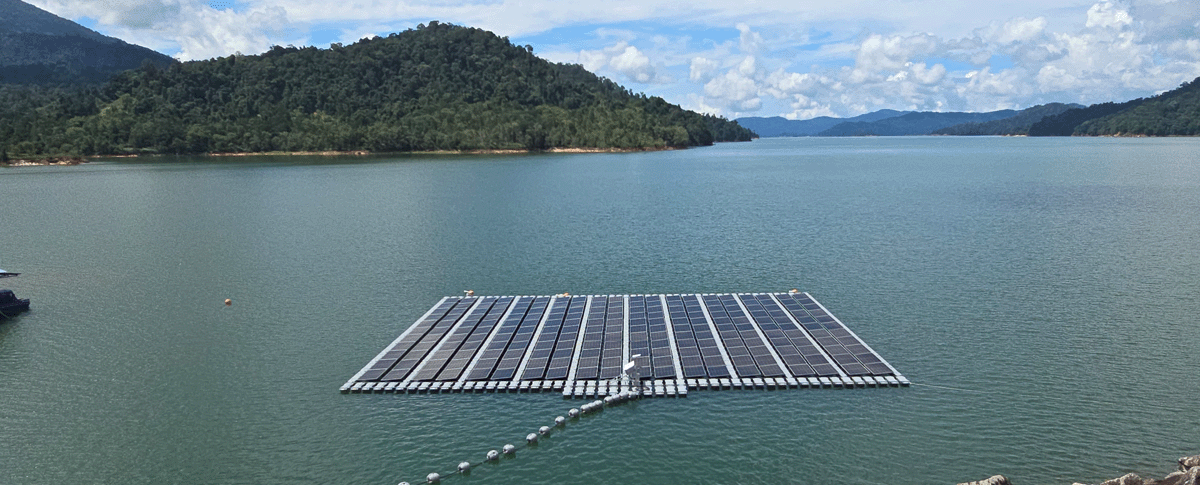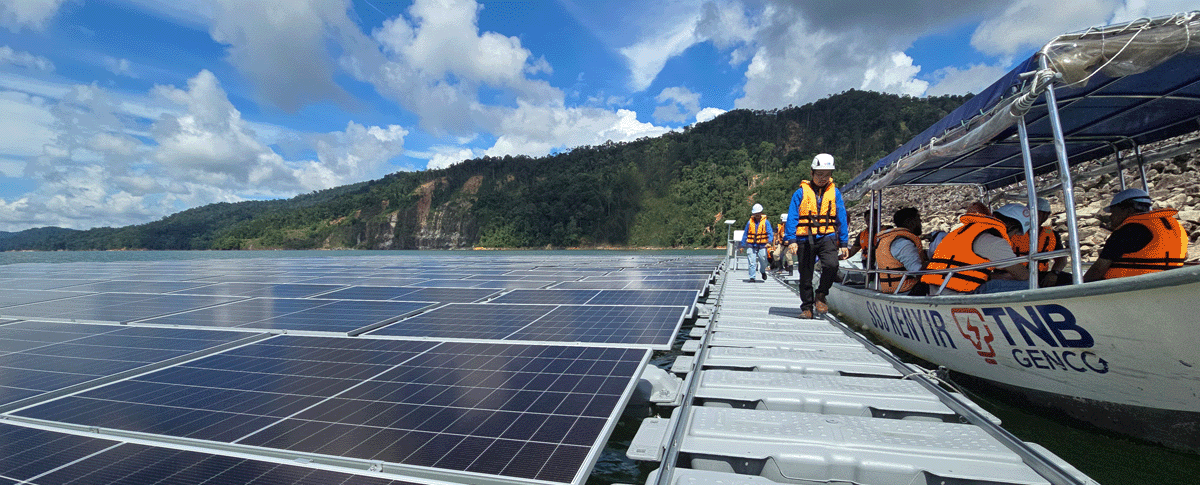The National Energy Transition Roadmap (NETR), launched in July 2023, is a pivotal initiative driving Malaysia's sustainable energy goals, aiming to increase the renewable energy (RE) mix to 70% of the nation's installed capacity by 2050.
TNB Power Generation Sdn. Bhd. (TNB Genco) has been entrusted to spearhead one of the flagship catalysts initiatives of developing potential 2.5 GW Hybrid Hydro-Floating Solar (HHFS) photovoltaic (PV) at Genco Hydro reservoirs. Memorandum of Understanding with Terengganu Incorporated Sdn Bhd and Perbadanan Kemajuan Negeri Perak has been signed in June and August 2023 with aims to assess the potential for developing floating solar projects.
Offtake Mechanism
The project has potential to participate under Corporate Renewable Energy Supply Scheme (CRESS) framework, which was officially open for application by the Energy Commission on 30 September 2024.
The CRESS framework aims to enable RE Developers to sell green electricity directly to their respective Green Consumers using TNB’s grid network by paying the System Access Charge.
The CRESS Programme is under the Government Renewable Energy Enhancement for Niche Sector (GREENS) MADANI initiative, which aligns with the Government’s aspiration to increase RE capacity, while ensuring the energy trilemma aspects being considered during its implementation.
Understanding Hybrid Hydro Floating Solar Project
The HHFS project combines solar PV systems with existing hydroelectric power infrastructure. This integration aims to maximise the use of hydro reservoirs for solar energy production, thereby increasing the overall renewable energy output and ensuring a reliable power supply.
The primary objectives of this project are to harness the synergy between solar and hydroelectric power, optimise resource utilisation, and contribute to Malaysia's renewable energy targets. The HHFS system involves installing solar panels on floating platforms over hydro reservoirs. These panels generate electricity during the day while the hydroelectric power plants continue to operate, providing a continuous energy supply even during periods of low sunlight.

Figure 1: HHFS Plan Concept
| Feature | HHFS | Regular floating Solar |
|---|---|---|
| Location | Hydro reservoirs | Any water bodies |
| Energy Source | Solar and hydroelectric power | Solar Power Only |
| Space Utilisation | Water surface | Water surface |
| Efficiency | High (continuous supply) | Varies (dependent on sunlight) |
Purpose and Objectives
The HHFS project is a significant component of Malaysia’s broader strategy to transform its energy landscape. By integrating floating solar panels with existing hydroelectric power infrastructure, the project aims to address both energy efficiency and sustainability. This innovative approach leverages the expansive surfaces of hydro reservoirs, which are otherwise underutilised, to generate additional renewable energy.
The HHFS project aims to:
Maximise Renewable Energy Utilisation
By combining solar and hydropower, the system ensures continuous energy production, even during periods of low water levels or insufficient sunlight.
Optimise Resource Use
Installing solar panels on the surface of hydro reservoirs reduces the need for additional land, thus preserving natural habitats and agricultural land.
Enhance Energy Security
The hybrid system provides a more stable and reliable power supply, mitigating the intermittency issues associated with solar power alone.
Key Advantages of HHFS
Pilot project in the ash pond of Stesen Janakuasa Sultan Azlan Shah
Motivated by the success of its floating solar pilot project in the ash pond of Stesen Janakuasa Sultan Azlan Shah (SJSAS) in Manjung. For TNB Genco’s mini floating solar at SJSAS, we conducted an ecology study through TNB’s wholly-owned research arm, TNB Research Sdn Bhd (TNBR). Every component of the floating solar system was carefully chosen & designed. Since 2019, the Floating Solar PV located on a 175-hectare ash pond in SJSAS has generated more clean energy.

Figure 2: Full view of floating solar pilot project at the ash pond of Stesen Janakuasa Sultan Azlan Shah

Figure 3: Floating solar pilot project at Stesen Janakuasa Sultan Azlan Shah
Pilot Project on Kenyir Dam
TNB Genco has developed a 154kWp floating solar PV project as pilot project on the water surface of Kenyir Dam for research and development purposes. The plant generates 224.6MWh/year and reduces 4,448 tCO2 emissions annually. The project adopts the Self-Consumption (SELCO) concept, where the generated solar energy is utilized directly within Kenyir Dam's operational system which reduces dependency on external power and optimize energy efficiency.
This project supports sustainable energy policies by demonstrating a scalable and replicable renewable energy model that can be implemented in other locations. The integration of floating solar with hydropower enhances energy security, reduces dependence on fossil fuels, and contributes to Malaysia’s renewable energy targets.
An Environmental Monitoring System is equipped with wind speed tracker, wind direction, rainfall, solar irradiance, ambient temperature, humidity, barometric pressure, and back module temperature, ensuring optimized system performance and early detection of adverse environmental conditions. The collected environmental data also provide valuable insights for the designer and authorities in assessing design parameters, optimizing future projects, and strengthening public trust in renewable energy initiatives.
This pilot project also serves as a blueprint for the large-scale expansion of floating solar at Kenyir Dam.

Figure 4: Full view of floating solar pilot project at Kenyir Dam

Figure 5: Floating solar pilot project at Kenyir Dam
Furthermore, we are committed to achieving these objectives as the HHFS project not only aligns with Malaysia’s strategic energy goals but also brings several significant benefits. These range from increased energy efficiency to environmental conservation, showcasing the diverse impact of integrating solar and hydroelectric power.
-
Increased Efficiency and Energy Output
- By combining two renewable energy sources, the HHFS project ensures a more stable and longer green renewable energy supply. Solar panels generate electricity during the day, while hydroelectric power compensates for periods of low sunlight, such as cloudy days or nighttime. The hydro reservoir act as "battery storage" during the period of solar generation as the dam level raise due to inflow of water from the incoming rivers. This hybrid approach maximises energy production and enhances overall efficiency as the setup are complementing each other.
-
Land Preservation and Optimal Use of Space
- Floating solar panels on hydro reservoirs eliminate the need for large tracts of land, preserving natural landscapes, forests, and agricultural areas. This innovative use of space also minimises the environmental footprint of solar energy installations, making it a more sustainable option.
-
Environmental Benefits
- The HHFS project significantly reduces reliance on fossil fuels, leading to lower greenhouse gas emissions and a smaller carbon footprint. The project contributes to global efforts to combat climate change and promote environmental sustainability by harnessing renewable energy sources.
-
Economic and Community Development
- The project creates job opportunities and stimulates local economies by involving local communities in constructing, operating, and maintaining hybrid hydrosolar systems. It also promotes technological innovation and skills development in renewable energy sectors.
-
Enhanced Energy Security and Reliability
- The hybrid system provides a more resilient and reliable power supply by mitigating the intermittency issues associated with solar power alone. This ensures a stable energy supply, reducing the risk of power outages and enhancing grid stability. The setup also increased asset utilization.
As continuity, the ESG Story on ‘The Benefits and Challenges of Floating Solar’ will be featured in the next publication.